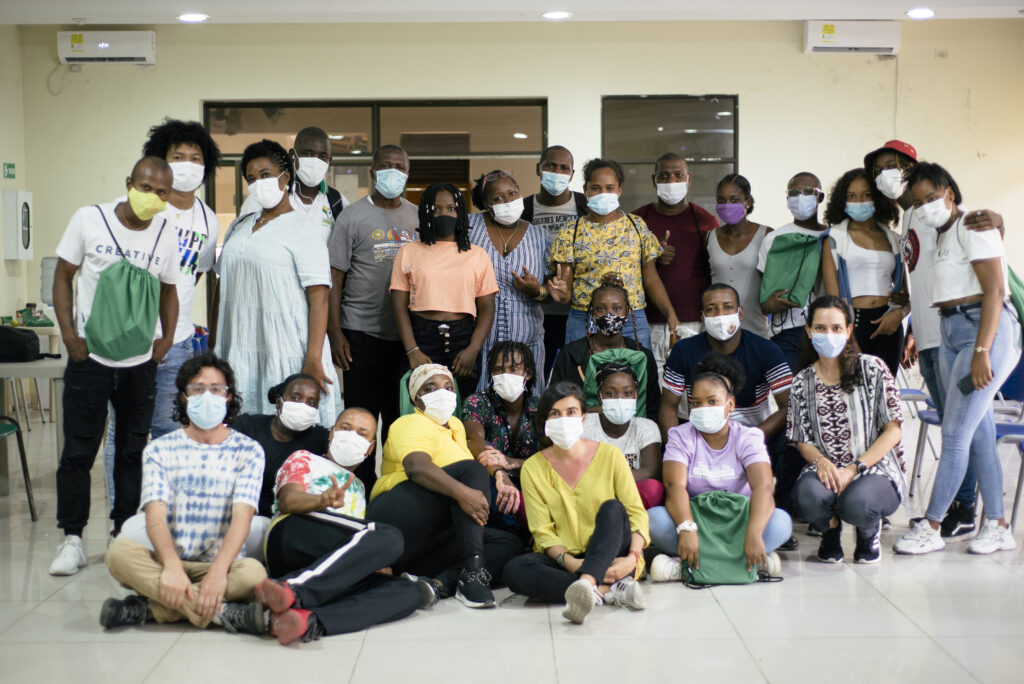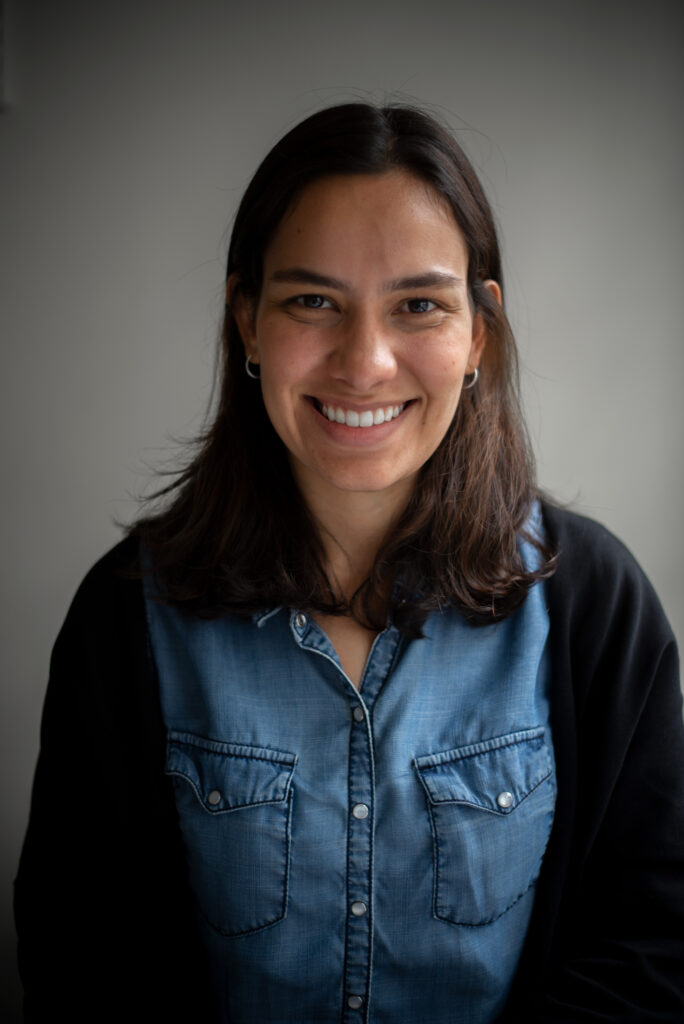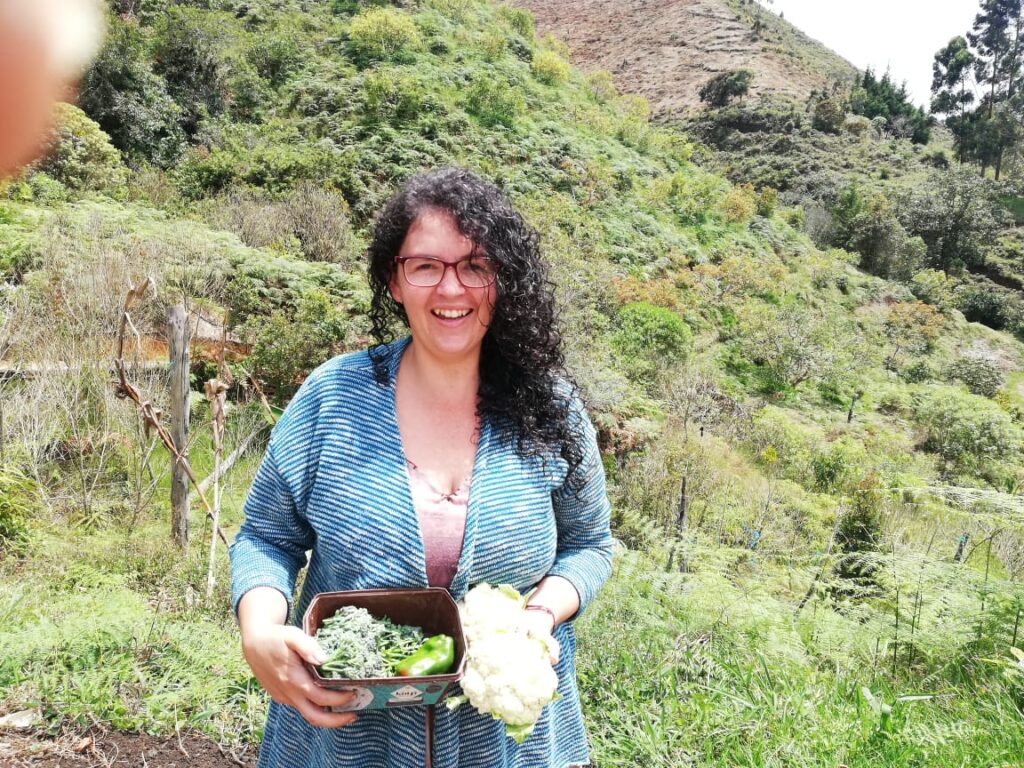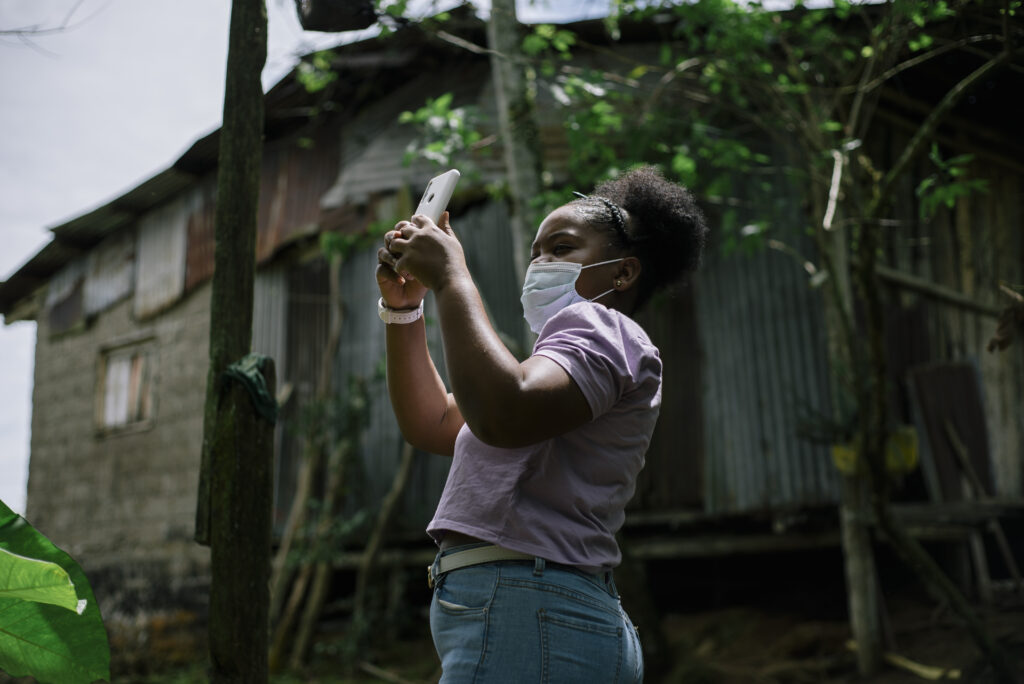Identifying Colombia’s news deserts was not enough for the Foundation for Press Freedom (FLIP, for its acronym in Spanish). In fact, when they were pointed out, in 2019 the team created a mobile journalism project to train leaders in those places and thus encourage the creation of local information.
However, these two-month trainings that have reached 18 municipalities in the country were not enough either. The people receiving the training wanted to put the knowledge into practice, and FLIP's goal of incentivizing that local information was not fully achieved.
“At that time, what we began to test were different formulas to help them on that path of starting to produce local information. And after doing several tests of different ways to achieve this, we came to this idea of building a network of journalists who were trained in the journalism laboratory and who wanted to start publishing information on a curated platform,” Carolina Arteta, pedagogical director of Consonante, the new Colombian media outlet created by FLIP, told LatAm Journalism Review (LJR).
Consonante is defined as a "journalism laboratory that fights the information silence in Colombia." To achieve this, they use as a basis their mobile journalism project that at the time was called Ruedas Creando Redes (Wheels Creating Networks), which consists of a container equipped with everything necessary to give workshops on journalism for radio, television, new technologies, photography, etc.

Equipo que terminó el curso con el laboratorio de periodismo en el municipio de Tadó, departamento de Chocó. (Foto: Gabriel Linares/FLIP)
This project, which at the time was planned for two years – a time in which they planned to reach just 10 municipalities in the country – not only grew in size, but also remains one of Consonante's lines of work. Diplomado (the certification course), as it is currently called, continues to function as the first training for leaders of municipalities who are interested in learning about the production of information.
People interested in continuing not only learning, but also creating journalistic content make up Consonante's line of work called the collaborations network.
Although a team of nine journalists, most of them women, is in charge of directing and guiding Consonante's lines of work from Bogotá, it is precisely the networks that allow Consonante to function as “a participatory and decentralized newsroom.” The team from Bogotá directs the news production, helps to identify topics, edit texts together with the participants and holds a weekly editorial meeting.

Carolina Arteta, pedagogical director of Consonante. (Photo: Courtesy)
“So, why do we say that we are like a decentralized newsroom? Because although the core team of the project are these journalists, who mostly already have experience, who are part of the permanent team of Consonante, it would not be possible for us to produce news from municipalities such as El Carmen de Atrato in Chocó or San Juan del Cesar in La Guajira, without the active participation of people who are part of any of our programs – be it the certification course or the network or a program that we have that is to also strengthen special projects – that news production could not be done,” Arteta said.
In the one month since Consonante was officially launched, the network was activated in the municipality of El Carmen de Atrato, in the department of Chocó (western Colombia), Arteta explained. Laura Cristina Giraldo is one of the people who has been part of this network for a month, although she joined the team in 2020 when she participated in the certification course.
"I had never, never been in absolutely anything that had to do with journalism," Giraldo, who lives in the village of La Argelia, almost an hour from the urban center of El Carmen de Atrato, told LJR. “I simply live here in this village and I am part of the Community Action Board [civic organizations made up of neighbors to promote the development of the area] and of different processes that are here in the municipality. And the idea of Consonante is precisely that, that the leaders that exist in the municipalities link ourselves to those training processes that they have, where we can have the capacity to tell what happens in the territories, because let's say that here in the municipality there are very few sources of information for the community.”
Although Giraldo says that she does not consider herself a leader as such, she is a person "who is asking questions all the time" and who is willing to use the legal system to obtain information.
“That is why I am involved, because I like everything to do with the community and I do not like injustices, and I want my community to move forward, as well. I think it was more for that reason that I linked myself to the proposal they have, to the journalists' network.”

Laura Cristina Giraldo is part of the network of El Carmen de Atrato, Chocó, for Consonante. (Courtesy)
And it is not only this desire to help the community. Giraldo since she did the certification course and "fell in love" with the network as well as the idea of doing journalism.
“I found the whole topic of the ways in which one can show what happens in the communities very cool. For example, I didn't know anything about video editing, or anything about audio, we hardly knew anything about podcasts, like those new things that are now available to broadcast information. And there we learned a lot about that, especially about video. We even went to the YouTubers school and so it was very, very cool," Giraldo said. It was also very important for her to learn about alternative media and how through social networks one can reach “practically everyone.”
Giraldo, a mother of three children and who, in addition to that work as a mother and caring for the home, dedicates herself to agriculture along with her husband. Now she must also take time to report, participate in newsroom meetings and think of the best ways to publish her stories.
“Yes, we had to dedicate a lot of time to it," Giraldo laughs. “What we do is that with my husband we have a motorcycle, so where we have to go, we go on the motorcycle, we take the time that we have to take...“We go to the other villages where we have to talk to the people or to the municipality.”
“In other words, you have to dedicate time, it is not easy either, and you have to dedicate time to get the key information that people tell us, what the sources tell us and sit down to write, which is not very easy for us,” she said. “But hey, we are learning, learning more and more what to write, how to edit the texts a little so that they reach people easier and in any case we have the Consonante team that also helps us a lot in the editing of the texts, on how to show, for example, the headlines so that they are more creative so that people want to read them.”
Consonante, which is supported by international organizations, plans to activate networks in different municipalities each month. Due to the fact that the certification course continues to function and has worked in several places already, its website has information on 12 municipalities from four departments.
Diffusion is one of the biggest challenges
As for almost all media, finding the best dissemination practices is one of the clearest objectives for Consonante. Given that it seeks to fill a local information gap, Consonante cannot afford to wait for audiences to arrive, as Arteta explained.
“We at Consonante have done several exercises of listening to, so to speak, research, some focus groups in several of the municipalities where we work in order to understand precisely the audiences we want to reach,” Arteta said. “And in this case our challenge is to try to reach distinct audiences, because although we can say that they are all information deserts, the reality is that each of these municipalities has particular characteristics. They are in different regions, they have different cultures, they have peculiarities that affect and influence the way in which these people like or do not like to be informed. And I believe that this is an exercise that will always be ongoing.”

Ejercicio de reportería liderado por Consonante en el municipio de Tadó, Chocó. (Foto: Gabriel Linares/FLIP)
Part of this dissemination strategy is the development of different formats – including audio, video and even printed formats – as well as the possibility of alliances with other local media to achieve greater impact.
However, one of the main bets for now is social networks, especially WhatsApp and Facebook groups. According to Giraldo, in the municipality that she covers, there are different WhatsApp groups such as for coffee growers, avocado growers, community mothers, among others, and it is through these that local information is disseminated.
“Here in the municipality there are a lot of people already using WhatsApp. Even older adults are already using it. As they have put the internet in the schools, in the rural schools here in the municipality, that also helps people to connect more, whether it be for an hour a day or they stop by the school and connect for a little while to see what's going on and stay informed. So through this means we are spreading a lot of information,” Giraldo said.
However, she recognizes that there are still obstacles, especially to reach the most remote communities where there is still no internet or people who cannot read or write.
“The challenge, I think, is to reach the most remote countrymen because in any case here in the municipality we have a problem and that is that there is no cell phone signal. As I told you here we have to have satellite internet, so not everyone can have it,” she said. “So, let's say that there is a very big challenge, how to reach the rest of the people, the rest of the countrymen, for example how to reach the Indigenous people, there is a large Indigenous population in the municipality.”
“So we are thinking about a stronger dissemination strategy so that we can reach other types of people,” Giraldo continued. “Undoubtedly, I believe that we do have to throw a lot into the audio as well as the video so that people can get the information in another way.”
In addition to audio and video for these populations, Consonant has also tried other more analog options. For example, in some cases they have printed the news. One of those cases was Giraldo's idea: the news was about the collapse of a road, and since she had planned a community meeting, she thought it best to distribute the news in the form of a brochure.
“We wanted that news to be held by people as well. Because in any case, in the news we not only said 'well, there was a collapse and the road was closed,’ but we also tried to tell a little of the context,” Giraldo said. “That it is not only a landslide because it rained, but there are other causes and there are other people involved, institutions involved in this matter. So, let's say we also carried out an investigation so that people are informed and really know what is happening with the issue of the collapse.”
Consonante has a specific text format short paragraphs, questions, explanation of news but as Arteta said, all those options and proposals for dissemination are valid. “We are super open on the team to really building journalism that serves the people,” she said.
The media outlet knows that it’s still too soon “to celebrate or cry,” according to Arteta. But they have seen what appears to be a good buy-in from the community and the scope of its articles. They know that in their case the metrics and visits to the page do not necessarily show how many people are being informed. Small examples show that this is the case: that one of its stories goes "viral" in the WhatsApp groups of the community, that more and more people are adding local journalists on Facebook, that all its articles have at least one comment or that local media have republished its notes.
Giraldo has also seen the acceptance.

Ejercicio del laboratorio de periodismo en el municipio de Condoto, Chocó. (Foto: Gabriel Linares/FLIP)
“I think people do like it. Even with that news about the road there were some families that were involved because they are at high risk. So those families told us, 'Did you publish what was mine? Did you tell me about me? I want mine to come out.' Because people are also interested in telling certain things that, let's say, no one dares to say,” she said. “People have been very willing to tell us. And in any case, I think that we too have tried to be very respectful of sources so as not to affect anyone with what we are doing.”
Consonante is funded by organizations such as the United Nations Democracy Fund (UNDF), the Geneva Center for Security Sector Governance (DCAF), the German Embassy, among others.
“That is one of the advantages that we are having. I do not know how fair it is, but it is an advantage, without a doubt, compared to local media that have great difficulties to sustain themselves in these municipalities where we are working, where the advertising guidelines have served as a tool to silence journalists who want to start talking about certain issues,” explained Arteta, who added that for now this support will guarantee them to function for a few years.
(Banner photo is the Atrato river in the Chocó department in Colombia. Photo by Dido9306/Getty Images/Canva)